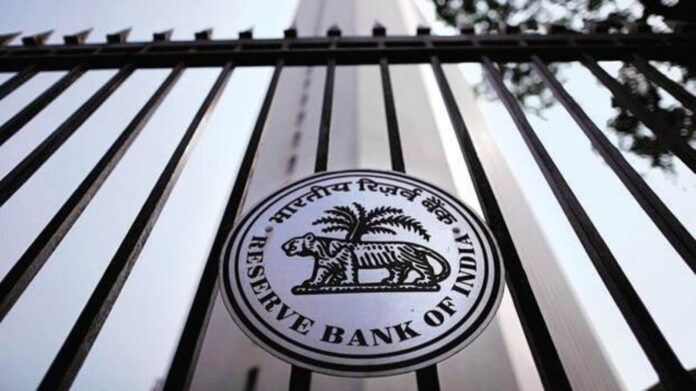Rightly so! Central bank governors are not in the game of follow-the-leader, heedless of domestic compulsions. As Das quipped in a recent interview to CNBC’s Tanvir Gill in Singapore, late September: “This seems to be rate-cut season.”
Adding, “But on a serious note, you see our monetary policy will be governed primarily, I would like to stress primarily, by our domestic macroeconomic conditions, by our domestic inflation [and] growth dynamics and the outlook. We will not be influenced by how much of a rate cut they are doing, whether it is 25 or 50 [basis points] or how often and what is the frequency of their rate cuts.”
Das was referring to the prospect of further rate cuts by the US Federal Reserve, and, possibly, a clamour from domestic markets to follow suit.
Yes, major central banks, including the European Central Bank, Bank of England, Swiss National Bank and, most recently, the People’s Bank of China have eased monetary policy in recent months.
But is that reason enough for RBI to do so? No, according to the newly-constituted Monetary Policy Committee (MPC) that met over the last three days (7-9 October).
The decision to mark time was widely expected—even if market aficionados, as is their wont, put forth a host of reasons why RBI should cut rates.
Apart from following in the footsteps of the mighty Fed, supply-side forces that drove India’s annual inflation to a high of over 6% (above the upper end of the 2-6% band specified under the inflation targeting regime) in 2020-21 and 2022-23 are now subdued. Global oil prices have largely been benign, even as each day brings the spectre of an all-out war in West Asia, and higher oil prices, ever closer.
Headline inflation has drifted lower, and core inflation, according to the governor, has bottomed out. Consumer Price Index (CPI) inflation declined from 6.4% in 2022-23 to 5.2% in 2023-24, and, barring periodic swings brought on by weather-related triggers, it is likely to settle close to RBI’s estimate of 4.5% this year.
August inflation, the latest month for which we have data, came in at 3.65 %, making it the second consecutive month with inflation below RBI’s 4% target.
However, the September number, as the governor cautioned, is likely to see an uptick on account of the ‘base effect’ (the statistical impact of a low number in September 2023) and higher vegetable prices.
In a scenario where, in the words of Governor Das, “Domestic growth has sustained its momentum, with private consumption and investment growing in tandem,” the MPC, rightly, saw “space to focus on inflation so as to ensure its durable descent to the 4% target.”
At the same time, given the growth-inflation mix, it “considered it appropriate to change the stance to ‘neutral’ while remaining ‘unambiguously focused on a durable alignment of inflation with the target, while supporting growth’.”
It’s hard to quarrel with its assessment. As Governor Das said, “India’s growth story remains intact, as its fundamental drivers—consumption and investment demand—are gaining momentum,” even as the “share of investment in GDP reached its highest since 2012-13.”
Indeed, RBI has been sufficiently emboldened to raise its first-quarter GDP growth estimate for fiscal year 2025-26 to 7.3% from 7.2% mentioned after the previous MPC meet in August 2024, even as it lowered its inflation estimate a tad to 4.3% from the 4.4% projected at the last MPC meet.
In Governor Das’s words, “The prevailing and expected inflation-growth balance have created congenial conditions for a change in monetary policy stance to neutral. Even as there is greater confidence in navigating the last mile of disinflation, significant risks—I repeat, significant risks—to inflation from adverse weather events, accentuating geopolitical conflicts and the very recent increase in certain commodity prices continue to stare at us. The adverse impact of these risks cannot be underestimated.” The message is clear: There’s no room for complacency.
Sure, there is the possibility that keeping rates higher for longer when most others are cutting them could trigger hot money inflows. But if RBI has any concerns on that front, Governor Das betrayed no signs of it, though foreign exchange inflows, especially into debt instruments, have been particularly strong during the last six quarters (even as foreign portfolio investors have been selling equities). Both as a result of the wide interest-rate gap between India and the US and the recent inclusion of Indian bonds in global indices.
But, as former British Prime Minister Margaret Thatcher (also known as the ‘Iron Lady’) famously retorted to her critics at a Conservative Party conference back in 1980, “This lady is not for turning,” Governor Das showed he is made of stronger mettle. He won’t be led by markets.
Given our present growth-inflation mix, he is not for turning. Not on rates. And certainly not now, before the battle against inflation has been decisively won. At the same time, he has shown he is pragmatic enough to recognize the need for a change in stance. For now, that sure sounds like a win-win formula.
#RBI #sticks #guns #wait #longer #policy #pivot
